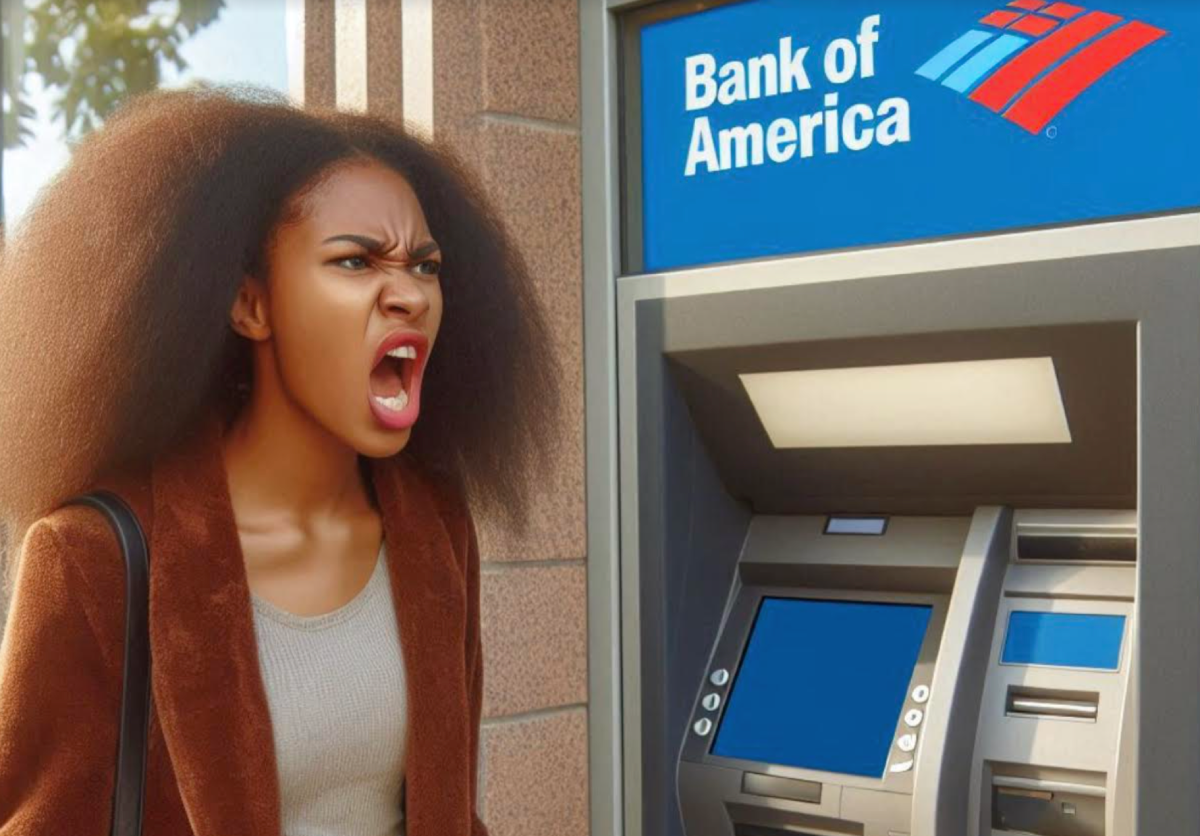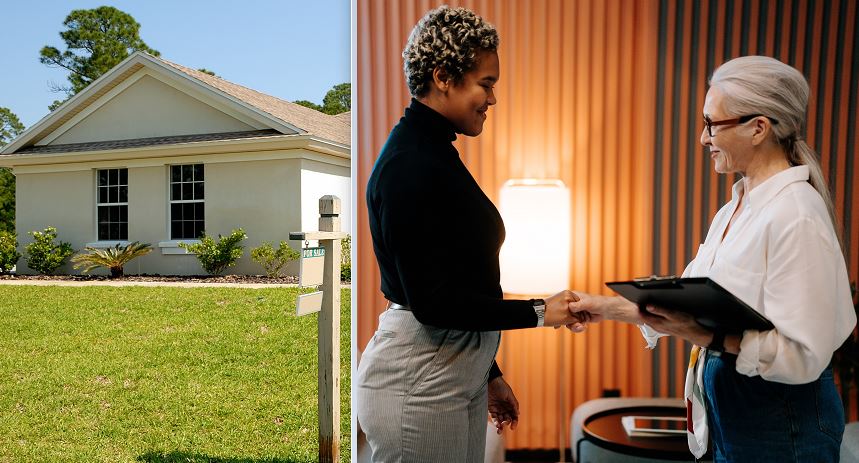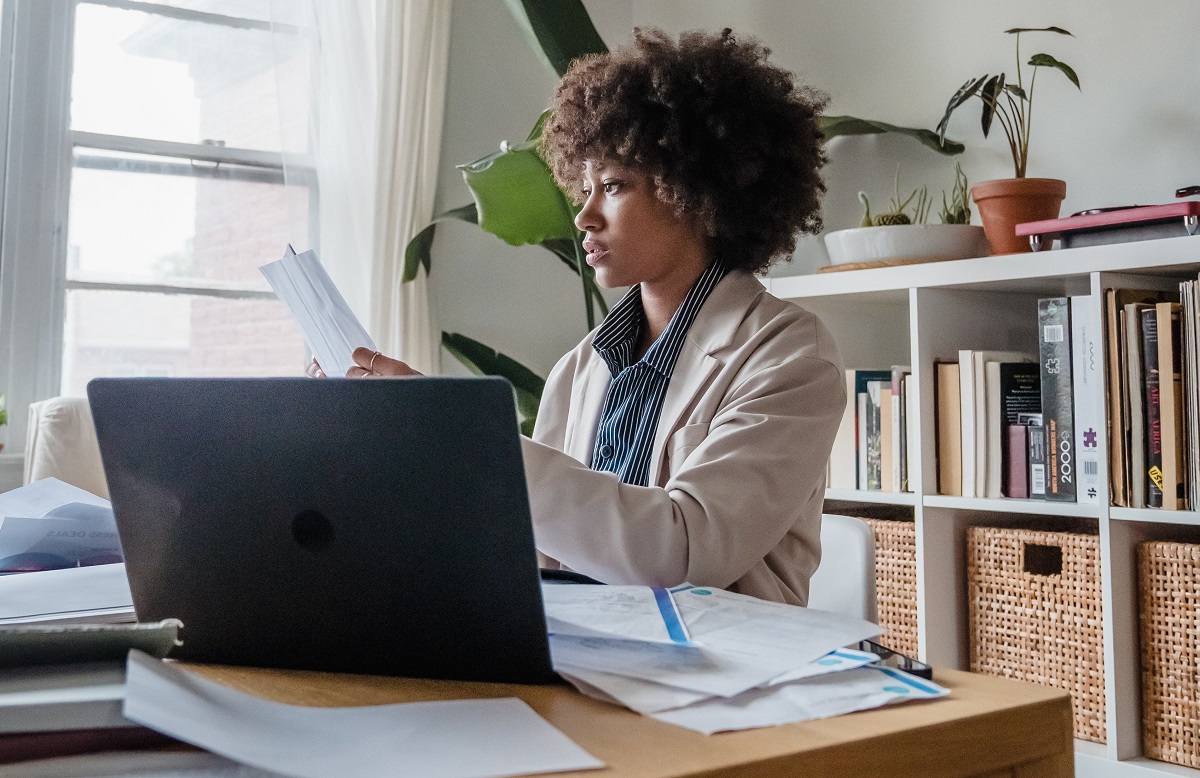-
America is in the midst of a tariff war with pretty much the whole world. What the ordinary American consumer may not realize is that tariffs will affect some household goods they use daily.
But what items will tariffs specifically affect? And what do the price increases mean for you and I? Let’s get into it.
What Products Are Going To Increase in Price Due To Tariffs?
Tariffs are likely to raise prices on a variety of consumer goods in the United States by increasing the cost of imported products, which is often passed on to consumers. Based on current economic analyses and the types of goods commonly imported, here are five consumer goods that are particularly vulnerable to price increases due to tariffs:
Electronics (Smartphones, Laptops)
A significant portion of electronics, such as iPhones and laptops, are manufactured in countries like China, which has been subject to tariffs as high as 20% (with proposals up to 60% or more). These tariffs directly increase the cost for importers, and studies indicate that much of this cost is passed onto consumers, potentially raising prices by 10% or more depending on the tariff rate and company pricing decisions.
Automobiles and Auto Parts

Photo by Jayson Hinrichsen: https://www.pexels.com/photo/woman-sitting-on-hood-of-black-car-11921769/ The U.S. relies heavily on imported auto parts and vehicles, especially from Canada and Mexico, which face 25% tariffs, and other countries subject to a baseline 10% tariff. This could add thousands of dollars to the price of cars—estimates suggest an increase of $2,500 to $5,000 for lower-cost models— impacting both new car buyers and those needing repairs with imported parts.
Fresh Produce (Avocados, Strawberries, etc.)

Agricultural products like fruits and vegetables, particularly from Mexico (which supplies about 90% of U.S. avocados), are hit with 25% tariffs. Since these are perishable goods with limited domestic substitution in the short term, prices are expected to rise quickly, potentially by 2.9% or more, affecting grocery bills.
Clothing and Footwear

A large percentage of apparel and shoes sold in the U.S. is imported from countries like China, Vietnam, and Bangladesh, facing tariffs ranging from 34% to 46%. Retailers often pass these costs to consumers, which could lead to noticeable price hikes for everyday items like sneakers and jeans.
Household Appliances (Washing Machines, Refrigerators, etc.)

Many appliances are imported from China and other nations, and past tariffs (e.g., on washing machines in 2018) have shown price increases of over 11%, adding roughly $86 per unit. With new tariffs in place, similar or greater increases are likely as manufacturers and retailers adjust to higher import costs.
Are Tariffs All Bad? Not Necessarily
One lesser-discussed aspect of tariffs is their potential to act as a strategic tool for economic development, beyond just protecting domestic industries or raising revenue. Economists often focus on the inefficiencies tariffs introduce—like higher consumer prices or trade wars—but rarely highlight how they can be used to foster long-term industrial growth in specific contexts.
Historically, countries like the United States, Germany, and Japan used tariffs in their early development phases to shield nascent industries from foreign competition. This allowed them to build domestic capabilities, achieve economies of scale, and eventually compete globally. The “infant industry” argument is acknowledged in economic theory, but it’s often downplayed because it’s hard to implement without corruption or inefficiency creeping in. Success requires precise timing—knowing when to phase out protection so industries don’t become permanently dependent.
Another secret is the bargaining power tariffs create. By threatening or imposing tariffs, a country can negotiate better trade deals, extract concessions, or deter unfair practices like dumping. This isn’t just about economics; it’s geopolitics masquerading as trade policy. Few economists emphasize this because it blurs the line between their field and political strategy.
The catch? Tariffs are a double-edged sword. They can backfire if other nations retaliate, or if domestic firms get lazy behind the protective wall. Data from the World Bank shows that countries with prolonged high tariffs—like India pre-1990s—often stagnated compared to those that liberalized strategically. So, the real secret is less about tariffs themselves and more about how they’re wielded: as a scalpel, not a sledgehammer.
-
If you’re a last-minute person, filing your taxes can be a chore. The good news is that you can file an extension on your taxes and avoid paying a penalty. Keep reading to learn how to do it.
When Is Tax Day 2025?
Tax day is Tuesday, April 15, 2025. That’s the last day to file. But what if you need an extension? We’re going to show you how to do it. Never pay someone to file an extension for you, it’s free to do.
Millions of Americans fail to file their taxes annually, subjecting themselves to huge penalties that accrue interest. You don’t want to be like that.
If you need to file a last-minute extension, here’s what you need to do.
How To File Your Tax Extension Form for Free
Individual tax filers, regardless of income, can use Free File to electronically request an automatic tax-filing extension.
- Filing this form gives you until Oct. 15 to file a return.
- To get the extension, you must estimate your tax liability on this form and should also pay any amount due.
Get An Extension When You Pay On Your Taxes
If you can only pay part of your tax bill, you can indicate that the payment is for an extension using Direct Pay, the Electronic Federal Tax Payment System (EFTPS), or a credit or debit card. This way you won’t have to file a separate extension form and you will receive a confirmation number for your records.
Extension Forms by Filing Status
Individuals
Special rules may apply if you are:
- Serving in the U.S. military in a combat zone or a qualified hazardous duty area
- Living outside the United States
Business and Corporations
The easiest way for criminals to steal sensitive data is simply to ask for it. IRS urges people to learn to recognize phishing emails, calls or texts that pose as familiar organizations such as banks, credit card companies or even the IRS. Keep sensitive data safe.
Final Word
Tax season is one of many times of the year when you need to be especially careful about your money moves. File an extension on your taxes to save your cash.
Read more:
-
Another day, another banking glitch affecting your money. On Wednesday, Oct. 2, Bank of America reported experiencing significant outages affecting many of its customers’ accounts.
Reports indicate that thousands are locked out of their accounts, and users are experiencing issues with both online and mobile banking services.
Bank of America Customers Report Zero Balances
Some customers have reported seeing their account balances drop to zero, and many have taken to social media to express their frustrations. The outage appears widespread, impacting various banking functionalities, including ATM access.
What You Can Do
If your bank experiences an outage—whether it’s due to a technical glitch, cyberattack, or other causes—your access to funds and banking services may be temporarily disrupted. Here’s what you can do:
1. Stay Calm and Assess the Situation
- Check for Official Communication: Visit your bank’s website, social media pages, or mobile app (if accessible) for official updates. Banks typically communicate through these channels to provide information about outages, estimated restoration times, and any temporary solutions they are offering.
- Use Alternative Communication: If the website and app are down, you can try calling customer service. Keep in mind that call volumes may be high, so be prepared for delays.
2. Verify the Cause of the Outage
- Outage or Localized Problem?: Ensure the issue isn’t specific to your account or local branch. An outage affecting the entire bank’s systems will likely be reported on the bank’s social media or via media outlets, whereas individual account problems will not.
- Check Online Resources: Websites like Downdetector provide real-time information about outages across various services, including banks. You can see if others are reporting similar issues.
3. Plan for Access to Emergency Funds
- Use Backup Cards: If the bank’s systems are down, try using credit cards, prepaid cards, or other bank accounts if available. Keep at least one alternative payment method on hand in case of a bank outage.
- Withdraw Cash: If you anticipate continued problems or are experiencing service interruptions, withdraw cash from an ATM or branch (if accessible) for necessary expenses.
- Note: Sometimes ATMs are affected by bank outages, so you may not be able to withdraw cash. Have backup funds stored for emergencies if possible.
4. Keep Track of Your Transactions
- Avoid Making Big Transactions: During an outage, try to avoid making large financial transactions unless absolutely necessary. Some transactions may not process properly and could lead to double charges or other issues.
- Monitor Your Accounts: Once service is restored, carefully check your bank statements and online banking history for any unusual transactions. Report any discrepancies to the bank immediately.
5. Use Branches and Phone Services (if Available)
- Visit a Branch: Sometimes, online and mobile banking services may be down while in-person banking at branches is still available. If your bank branch is open, visit it for any urgent banking needs like deposits, withdrawals, or account inquiries.
- Phone Banking: If your bank’s mobile app and online services are down, try using the automated phone banking system or speaking with a representative to manage your account.
6. Keep Bills and Automatic Payments in Mind
- Check Payment Due Dates: If your bank outage affects bill payments, ensure that automatic payments or manual payments for things like rent, utilities, or credit cards are still processed on time. Reach out to the payees if there is a delay due to the outage.
- Avoid Late Fees: If you’re unable to make payments because of the outage, contact the creditors and explain the situation. Some companies may waive late fees or offer a grace period due to bank outages.
7. Secure Your Accounts
- Be Aware of Scams: Cybercriminals may take advantage of the chaos during a bank outage to launch phishing attacks or scams. Be cautious of unsolicited calls, texts, or emails claiming to be from your bank asking for account information or offering help. Always use official channels to communicate with your bank.
- Monitor for Fraud: After services are restored, monitor your account closely for any unauthorized activity. Notify your bank of suspicious transactions immediately.
More Articles From NolaFi.com:
-
By default, Venmo transactions are public, which means anyone can see your payment history unless you change your privacy settings.
In this article, we’re going to tell you how to set your Venmo payments to private.
Why Your Venmo Payments Need To Be Private
Users can be targeted by phishing attacks through email or text messages that appear to be from Venmo, tricking them into providing personal information.
Venmo relies primarily on a username and password for account access. If your password is weak or reused, your account may be vulnerable.
While Venmo does offer some security features, it doesn’t provide robust two-factor authentication, making accounts susceptible to unauthorized access.T
o make your Venmo payments private, follow these steps:
- Open the Venmo App: Launch the app on your device.
- Go to Settings: Tap on the three horizontal lines (menu) in the upper left corner to access your account menu, then select “Settings.”
- Privacy Settings: In the Settings menu, tap on “Privacy.”
- Choose Your Privacy Option:
- Private: Select “Private” to ensure that only you and the recipient can see the payment details.
- Friends: If you choose this option, only your Venmo friends will see your transactions.
- Public: Avoid this option if you want to keep your payments private.
- Adjust Existing Transactions: You can also adjust the privacy settings for previous transactions by tapping on each transaction in your feed and selecting the privacy setting you prefer.
- Limit Friend Requests: Consider reviewing your friends list and limiting who can see your transactions by managing friend requests.
By following these steps, you can keep your Venmo payments private and control who sees your transaction history.
Final Word
If you plan on visiting the city for New Orleans, you should know that the area you’re staying in is safe.
Expect to indulge in many foods that New Orleans is known For, including Gumbo, Beignets and more.
Read about things to see and do in New Orleans.
More From NolaFi.com:
-
If you’re thinking about joining the world of landlords, you should know that it can be very profitable and help unlock your financial freedom.
No matter if you’re thinking about holding onto the property for some years or flipping it, you can make some serious money if you go about it the right way.
Buy Real Estate Property In Louisiana With These 7 Steps
In this article, we’re going to show you how to buy rental property so that you can make a profit, no matter what your strategy is. Speaking of that, let’s get right to a few questions you need to ask yourself.
Quick Navigation:
- Find A Real Estate Strategy
- Count Your Expenses
- Know Your Return On Investment
- Get Pre-Approved For A Mortgage
- Go Property Hunting
- Make An Offer
- Close On The Property
Come Up With A Real Estate Strategy
You need to have a strategy before you buy real estate for investment purposes. If you don’t, you could find yourself over your head. Let’s talk about some profitable real estate strategies you can employ. The most popular ones are the buy-and-hold and flipping strategies.
Buy and Hold
The buy-and-hold strategy allows you to own a home for several years and allow it to appreciate over that time. If you have a tenant, you can gain additional income by collecting rent every month.
Because it is a long-term strategy, the buy-and-hold approach can allow you to make money constantly on your property.
The downside
The downside of holding onto the property is that you have to wait a long time to see a profit on your initial investment. Also, you run the risk of the market having a downturn and the property actually losing value, which may put you behind the eight ball when it comes to appreciation.
Flip That House
Home-flipping is not a new concept, but when the market experiences a down period, more investors consider this option. The idea behind flipping a home is to buy it in a distressed state or when the market is down and sell it either when the market rebounds and when sufficient improvements are made to the home so as to raise its value.
The downside
The downside of home-flipping is that you make find yourself out of a lot of cash upfront in order to fix the property. Sometimes owners never make back their original investment.
Count Your Expenses
To decide whether you can make a profit from your rental property, you have to count your expenses. You won’t know just how much money you’ll need to generate until you make a list of things you’ll be paying for on a monthly and yearly basis.
Try to evaluate the home to see what the expenses could be. Does it need a new roof? Will you be pouring concrete or reshaping the driveway?
Here is a list of some expenses you may incur:
- Maintenance
- Landlord insurance
- Property taxes
- Mortgage payment
- Utilities
After you’ve made up list, you need to add up the figures and see what your profit is.
Know Your Return On Investment
Your return on investment is a mathematical equation that real estate investors use to determine whether buying a property makes financial sense for them.
While some endeavors have very good returns in the high double-digits, in real estate you can expect anything above 10%. It’s perfectly alright to come in above that figure as well.
The truth is that your ROI will be tied to the amount of risk your budget is able to withstand. It’s different for every investor.
How To Know How Much To Charge For Rent
You might not know what you should charge for rent. A good rule of thumb is that for every $50,000 you should charge $50. So if the home is worth $250,000, you should charge $250 a week. That’s $1,000 a month.
Once you have an idea on what your ROI is, it’s time to go ahead. Now that you know what kind of money you can make, it’s time to buy the property.
Get Pre-Approved For A Mortgage
The first real step to owning property is to get pre-approved for financing your mortgage. Mortgage lenders are typically going to want 20% down, especially for a rental property.
If you want a cheaper down payment, the property has to be owner-occupied. That means if you’re interested in buying a multi-family dwelling (say a duplex, triplex or some apartments) you can qualify for a down payment of around 9% give or take a point.
Go Property Hunting
Now comes the fun part: Searching for properties!
For rental properties, it’s incumbent on you to research the neighborhoods as well as the properties because some areas frown upon rental units.
For instance, if you see a multi-family property in a neighborhood with $300 homes, you may face some backlash from nearby homeowners who feel strongly that their neighborhood or street shouldn’t have different tenants rotating in and out. That’s extreme, but it does happen.
Also, when house-hunting, you need to decide whether you’re going to work with a Realtor or go it alone and look for the properties yourself. There are pros and cons to each decision, but just know that your Realtor will charge you a fee due upon the closing of the home.
Make An Offer
When you find your rental property, make sure you follow these steps so that there aren’t any problems.
- Get an appraisal: Make sure what’s listed on the appraisal fits what your eyes can see.
- Forego any major repairs: Instead of letting the seller fix the home, accept it as-is so you can buy the home for a cheaper price.
- Negotiate your contract: If there are any must-fixes or must-haves, put it in writing so that it’s contingent on the sale.
If your appraisal comes in higher than the comparable homes, congratulations: You’ve already got yourself some equity.
Close On The Property
The way a home closing typically works is that three people meet to close the deal. Although more people can be there (family, etc.), the essential parties are the seller, buyer and a real estate attorney.
At closing, the ownership of the home switches hands. This is indicated by signing the documents, including the transferring of money from escrow accounts, title fees and modifying the deed on the house.
Typically you can close about 30 days out, but you can do it much sooner if both parties agree. Once you’re all at the closing table, the deal should take one and a half to two hours.
Final Word
Becoming a landlord can be an important way to financial wealth. If you’re contemplating buying rental property in Louisiana, there’s a strategy that you have to adhere to.
If you’re thinking about purchasing some rental property in Louisiana, you should know that it’s a great investment to make for your future.
Renting property is a great way to make additional income. For some, it’s been a get-rich scheme, but oftentimes, it’s not. Go into it with your eyes wide open.
if you follow the steps, we’ve mentioned, you can purchase a rental home and everything will go smoothly. After you get the keys to your new property, remember to change the locks. But not before you enjoy a nice bottle of champagne at closing.
More From NolaFi.com:
-
Homes / lifestyle / Personal Finance / Save Money5 Min Read
With higher prices and stagnate paychecks, many Americans see affordability is a major issue when it comes to buying a home. In a major city like New Orleans, saving up for a home can be difficult.
This article will tell you how to determine how much home you can buy in New Orleans.
There are many affordable homes in large metropolitan cities like New Orleans and others, but it depends on what you’re looking for.
Here’s How Much House You Can Afford In New Orleans (Calculator)
People buy more house than they need for several reasons:
- Bad advice from Realtors
- Keeping up with the Joneses
- Resale purposes
Let’s talk about each of these a little bit before we move into what homes cost in New Orleans:
Bad Advice From Realtors
Real estate agents play a vital role in the homebuying process, but you have to know when they’re in and out of their lane.
A Realtor has no business telling you how much house you can afford. That’s what a lender is for. A Realtor should only advise you on what type of home you want.
Still, many people listen to Realtors who are out to make a buck. Some of them will tell you that you can afford the home by this strategy and that strategy, but the truth is, it may be a bad deal.
Keeping up the Joneses
This is the worse reason to buy a big house: To keep up with your neighbors, friends or other family members.
If you are vain enough to buy a huge home because of someone else’s situation, then you’re the type that will end up with bad credit because you’re paying too much for your home, car and appliances.
Resale Purposes
Some potential home shoppers want to buy a home because they think that appreciation is going to let them double or triple their money (again, bad advice).
That’s not the reason you should buy a home. You should purchase a home because you like it, the way it looks, feels and speaks to your sensibilities.
The resale market is too unpredictable to base such a big purchase on, especially if you’re not a seasoned investor.
So, how much home can you afford? Here’s how to find out:
Multiply Your Annual Income
To find out how much home you can afford, you would multiply your annual income by two or three.
Let’s say you make: $50,000 a year. That means you could afford a home that costs anywhere from $100,000 to $150,000.
Of course, this will be affected by two things:
- Interest rate: The percentage that is paid by borrowers for the money that they borrow.
- Credit score: A three-digit number that indicates to banks and other lenders how likely you are to repay debt.
Here Are 5 Ways To Determine How Much Home You Can Afford
Answer these questions:
- 1. How much is your annual income?
- 2. How much is your downpayment?
- 3. What ZIP code do you want to live in?
- 4. How much are your monthly expenses (food, clothing, mortgage, etc)?
- 5. What is your credit score?
Here’s a mortgage calculator to help you:
How Can I Calculate How Much Home I Can Afford?
https://www.mortgagecalculator.net/embeddable/v2/?size=1
Powered By www.MortgageCalculator.netOther Factors That Determine How Much Home You Can Afford
Another factor that will indicate how much house you can afford is your expense-to-income ratio.
Front-End Ratio
This is how much your monthly expenses are vs. how much income you bring in. Banks like this number, commonly called a “front-end ratio,” to be between 28 and 30%.
Your mortgage lender will look for your mortgage payment and PMI (private mortgage insurance) to all be around 28% of your income.
Debt-To-Income Ratio
You’ll also need to have a relatively low debt-to-income ratio to get the home you want. This means that the amount of debt you’ve borrowed and paying back is not gobbling up most of your income.
Banks like your debt-to-income ratio to be around 36% typically.
Are You A Veteran?
If you have served your country, the Department of Veterans Affairs (VA) offers home loans and grants to help you buy, refinance or renovate your home.
For ex-military and their surviving spouses, the VA guarantees part of the loan, meaning they will cover a portion of the loan if you default. Learn more here.
30-Year-Loan Or 15-Year Fixed?
If you have a choice, you may be wondering which is better: A 30-year mortgage or a 15-year mortgage?
The truth is that both have their advantages. A 30-year mortgage would typically mean a lower monthly bill because the payments are spread out over more years.
The bad part is that you’ll pay a lot more in interest over those years.
For a 15-year fixed, the interest rate is lower and you’ll pay off the principal faster.
The bottom line is if you can afford to do a 15-year mortgage, you should!
Are you looking to buy a home in Atlanta? If you’re selling your old home, there are some things you’re going to need right off the bat:
- A fresh coat of paint
- Freshly manicured lawn
- Latest home trends
Once you’re all set in those areas, you’ll be ready for New Orleans’ real estate scene.
Final Word
When it comes to getting a home, you should always make sure that you’re pre-approved for a mortgage before you begin your search.
And before you choose a lender, make sure you read the reviews.
More Articles Like This:
-
Once you get behind on your bills, it can be very difficult to catch up on your payments. Debt can cause you to spend more money on interest as well — but if doesn’t have to be that way.
There are some time-tested strategies that you can do to get you out of debt in a calendar year. It’s going to take time, patience and an overall focus like never before on your part. But you can do it.
Yes, You Can Get Out Of Debt This Year
This article is going to tell you some steps to get out of debt.
We’re going to cut straight to the chase so that you can understand how to keep more of the money you make and not spend it immediately.
Contrary to popular belief, you don’t always have to pay money to get out of debt.
Here’s How To Get Out Of Debt Without Paying
One way to get out of debt is to ask for a pay increase at your job. Today’s job market is such that you may be able to get more money if you ask for a raise.
Do you have a laptop? Then you can make extra cash. Here are some other ways you can achieve your goal:
What Is The Fastest Way To Get Out Of Debt?
Aside from winning the lottery, which is not something we play, there are not any get-rich quick schemes that can work in real time. But that doesn’t mean you can’t make some serious inroads on your finances.
Here are the fastest ways to get out of debt.
Stop Spending
The first thing you need to do is put the credit card down. Obviously, there are things you need to buy, but you also need to slow down or stop spending on unnecessary things.
You might want to write a list of items you need to buy and stick to it. It’s called creating a budget. Once you have that, you will know what kind of money is going into your account and what’s going out.
Keep Your Credit Cards Open
One thing people in debt usually do is close their credit card accounts once they get out of debt. This is a mistake. Keep your credit card accounts open so that you can retain purchasing power.
Pay Off Your Most Expensive Debt First
Once your budget is set, then it’s time to pay off the most expensive debt first. The rationale behind this is to pay off the highest interest rate, which is taking the majority of your money.
If you have a credit card with $800 and one with $400, don’t be tempted to pay off the $400 first. Take care of the $800 because that’s the one you’re paying the higher interest rate on.
Take a look at your expenses and circle the smallest balance. That’s the one you pay first. Not only will this eradicate that particular bill, but it will give you some much-needed momentum to start attacking your other debt.
Pay More Than The Minimum Balance
You’ll never catch up if you only pay the minimum balance on your credit card balance. To make some progress, you always need to pay more than your minimum due.
It doesn’t have to be a large sum of money attached to each payment, but it needs to be extra i.e. more than the amount.
Final Word
Nobody likes to owe someone for a long time, no matter if it’s a credit card company or a person. That’s why credit card debt is so depressing. The good news is that you can get out of debt.
Tired of being saddled with credit card debt? It’s time for you get lighten your burdens and get out of financial trouble.
After you make some headway and get out of debt, it’s important that you stay out of debt. Stay within your means by sticking to your budget.
More From NolaFi.com:
-
Money doesn’t grow on trees, but it can slowly add up if you have a strategy to save cash. Do you want to know how you can keep more of the money you earn? Keep reading.
Here’s What You Have To Do To Save Money
The #1 thing you have to do to save money is to create a budget. The importance of one can’t be overstated. No matter what big purchase you make in your life, you’ll need a budget to make it happen.
What Is A Budget?
A budget is a ledger of your financial transactions. The three things every budget has in common are:
- A list of transaction
- A description of the transaction
- Dates of the transaction
A budget is a timelessly effective way to keep track of and control your spending. A workable budget will allow you to keep control of your expenses so that you don’t go into debt every month.
How To Create A Budget
To create a budget, here are the steps you need to take:
Write Down Your Financial Obligations
When you write down your financial obligations, aka bills, you’ll see what you’re working with. They will typically include:
- Mortgage
- Car note
- Car insurance
- Utilities
- Day Care
- Food Expenses
- Gas Money
- Credit Card Debt
- Student Loans
Calculate Your Monthly Income
Next it’s time to gather all your pay stubs to add up how much your net income is at the end of the month. This figure will tell you what you’re capable of spending every 30 days without losing your shirt.
Here are some free budget calculators you can use:
Balance The Two
Now comes the mathematics: Compare your monthly net income to your expenses to find out if you can continue to afford the lifestyle you’re currently maintaining.
Are you saving for a house? If so, then you’ll want to compensate for that money by scaling back on one or two or three expenses.
Continue to trim your expenses if you find that you’re not using some of the things you’re paying for. That includes gym memberships, streaming subscriptions and more.
Final Word
If you’ve ever wondered how much money you actually make each month, the way to do that is by creating a budget.
It’s time you took your finances seriously and start to invest in your future. The easiest way to do that is to know how much money you have coming in and going out each month. Yes, you need to create a budget.
If you value money, you know how hard you have to work to get it. And that makes you want to set some aside when you can. It’s called saving money, and it’s the thing to do today.
Budgeting is the linchpin of proper financial management — and an important first step in saving money.
Don’t think you have to do it all by yourself. Let technology help you budget your money. Here are some free apps you can use that are designed to make budgeting easier.
Your local bank may also have some online tools you can use to help you budget your money better. It doesn’t matter what tool you use, the important thing is that you devise a budget!
More NolaFi.com Articles:
-
Having a good grasp on your finances is a major way to live your best life. While money isn’t everything, it can be a large part of your happiness.
Price comparison apps may not include all retailers or products, limiting the scope of the search and potentially leading you to miss out on better deals.
As you know, personal financial success is something they don’t teach in grammar school, high school or even college. But you can get your personal finances in order.
In this article, we’re going to show you how to gain financial freedom.
How You Can Achieve Financial Freedom
You may think using the word “freedom” with finances is an overstatement. But the truth is that the economy reality of today’s world is that if you don’t have control of your finances, you are in a lot of ways shackled.
Get Out Of Debt
Make a concerted effort to get out of debt, especially credit card debt. If you can, try to work with a credit counselor to come up with a plan that woks.
If a credit counselor is not in your plans, come up with a strategy you can implement yourself.
Save Money
Now after you’ve gotten out of debt, it’s time to start putting some cash away.
If you can do it, try to save 15% to 20% of your income on a monthly basis. If you can save more than that, go for it. If you’re not able to save at least 15%, that’s OK too.
Invest Your Money
Investing your cash is one of the easiest ways you can grow your bank account. Before you do, educate yourself about the stock market and mutual funds.
More From NolaFi.com:
-
One of the best ways to save money for your retirement is to open a Roth IRA. Some people are intimidated by tax advantaged accounts, but you shouldn’t be.
This article will tell you how to set up a Roth IRA so you can plan for your retirement.
As an IRA (individual retirement account), a Roth has some cool features that make it a great way to fund your retirement and not be penalized by taxes.
Everything You Need To Know About Roth IRAs
Not everyone qualifies to open a Roth IRA, but if you have earned income, you’re good.
With that being said, If you make more than $140,000 as a single person or $208,000 as a married couple filing jointly, you don’t qualify to contribute to a Roth IRA.
But let’s find out exactly what a Roth IRA is and how it works.
What Is a Roth IRA?
A Roth IRA is tax-advantaged individual retirement account named after the late Delaware Sen. William Roth, who championed its creation in 1998.
What makes the Roth IRA different from traditional IRAs is that the Roth version is funded with after-tax dollars and allows the owner to make tax-free withdrawals in retirement.
Here are some key features of a Roth IRA that you should know about.
- You cannot deduct contributions to a Roth IRA.
If you satisfy the requirements, qualified distributions are tax-free.
- You can make contributions to your Roth IRA after you reach age 70 ½.
- You can leave amounts in your Roth IRA as long as you live.
What Are The Advantages Of A Roth IRA?
These accounts come with many advantages. With a Roth IRA, you get to invest after-tax dollars and take tax-free distributions.
Another advantage is that instead of making deductible contributions, which is what you’d expect for a typical account, Roth IRA account holders are allowed to make after-tax contributions. They can then turnaround and withdraw their money tax free in retirement, including on investment gains.
What Are The Disadvantages Of A Roth IRA?
Some disadvantages of Roth IRAs is that you can’t roll them over to a traditional retirement plan.
Another disadvantage is that if you make too much income, you won’t be able to contribute to a Roth IRA. There’s also an annual contribution limit that you must adhere to. Because of that resin, you’ll need other investment options to live comfortably in retirement.
You also aren’t allowed to make tax-deductible contributions to a Roth IRA.
How To Open A Roth IRA
It’s very easy to open a Roth IRA. You can do it online or in person at a bank, mutual fund firm or brokerage.
Open A Roth IRA With Fidelity.
How Much Money Can I Make From a Roth IRA?
How much money you can make from a Roth IRA depends on how long you let it grow.
Let’s say you open a Roth IRA with an initial $6,000 investment. With an annual rate of return of about 7%, your money can top $20,000 or more over two decades..
You can make even more money with your Roth IRA with a 8% or 9% average annual return, which can happen.
What Is The 5-Year Roth Rule?
The 5-year Roth rule requires account holders to wait five years before withdrawing any converted balances — contributions or earnings — regardless of your age.
You’ll pay a 10% penalty when you file your tax return if you take money out before five years elapses.
Final Word
A Roth IRA is a tax-advantaged account that allows you to be strategic in how you to contribute your post-tax earnings.
Taking care of yourself financially is the #1 way to live better later in life. If you do so, you can save money on travel, what you pay at the grocery store and other expenses.
Read how to get out of debt right now.
More From NolaFi.com:















